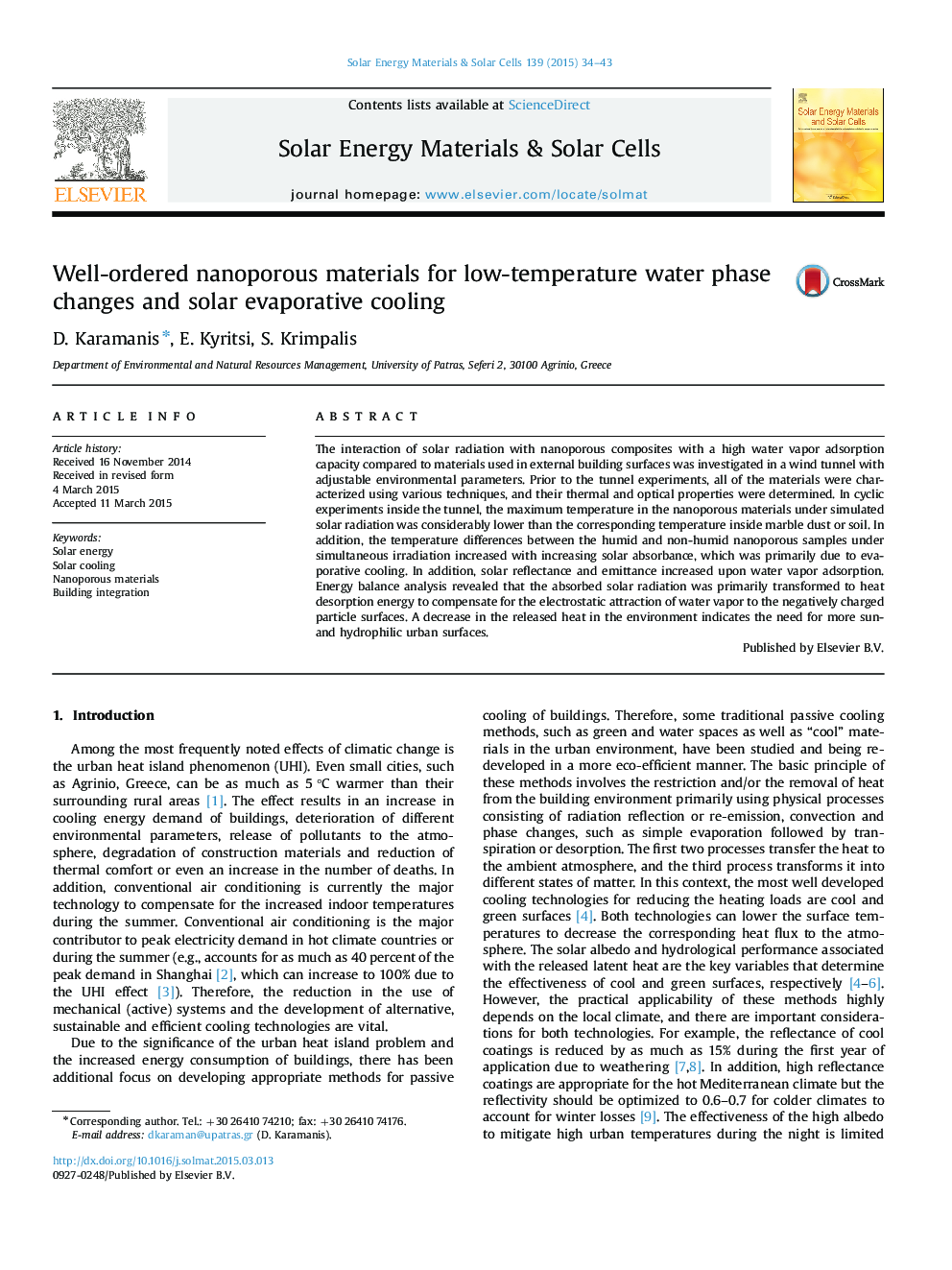| Article ID | Journal | Published Year | Pages | File Type |
|---|---|---|---|---|
| 6535186 | Solar Energy Materials and Solar Cells | 2015 | 10 Pages |
Abstract
The interaction of solar radiation with nanoporous composites with a high water vapor adsorption capacity compared to materials used in external building surfaces was investigated in a wind tunnel with adjustable environmental parameters. Prior to the tunnel experiments, all of the materials were characterized using various techniques, and their thermal and optical properties were determined. In cyclic experiments inside the tunnel, the maximum temperature in the nanoporous materials under simulated solar radiation was considerably lower than the corresponding temperature inside marble dust or soil. In addition, the temperature differences between the humid and non-humid nanoporous samples under simultaneous irradiation increased with increasing solar absorbance, which was primarily due to evaporative cooling. In addition, solar reflectance and emittance increased upon water vapor adsorption. Energy balance analysis revealed that the absorbed solar radiation was primarily transformed to heat desorption energy to compensate for the electrostatic attraction of water vapor to the negatively charged particle surfaces. A decrease in the released heat in the environment indicates the need for more sun- and hydrophilic urban surfaces.
Related Topics
Physical Sciences and Engineering
Chemical Engineering
Catalysis
Authors
D. Karamanis, E. Kyritsi, S. Krimpalis,
